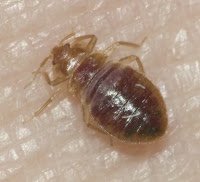 Dallas, TX. It's no secret that bed bugs are one of the biggest new challenges that the pest control industry has faced in many years. In some ways, as a pest control professional, bed bugs are your worst nightmare. Infested structures are mostly hotels and apartments, arguably two of the least profitable and most difficult kinds of accounts to service. Infestations are usually centered around beds and bedrooms, often the most cluttered and private rooms of a home. Good service is extremely time consuming and requires diligent follow-up to be successful.
Dallas, TX. It's no secret that bed bugs are one of the biggest new challenges that the pest control industry has faced in many years. In some ways, as a pest control professional, bed bugs are your worst nightmare. Infested structures are mostly hotels and apartments, arguably two of the least profitable and most difficult kinds of accounts to service. Infestations are usually centered around beds and bedrooms, often the most cluttered and private rooms of a home. Good service is extremely time consuming and requires diligent follow-up to be successful.On the other hand, bed bugs open up an opportunity for astute and detail-oriented companies. A company that can master bed bug control can easily open a growing niche in the pest control business. And there's no sign of bed bug problems slowing down or going away.
I'm not an expert on bed bug control. I'll leave that title to you guys who have a dozen or more jobs under your belt, and who have achieved a high level of customer satisfaction. But I'd like to share a few facts about bed bug control gleaned from the researchers:
- Bed bug control is time consuming. In 2005, a survey of 225 pest control companies offering bed bug control services was conducted by Cornell University's Survey Research Institute (American Entomologist, Summer 2006). Most companies spent 30-60 minutes inspecting and preparing a typical bedroom and at least one hour to treat. This is not a fly-in, fly-out kind of job.
- Count on multiple visits to get satisfactory control. In the Cornell study 62% of the companies claimed to control bed bugs in 2-3 visits. In a study conducted by Bayer Environmental Science, and reported by Byron Reid at last May's National Conference of Urban Entomology, U.S. pest control companies required 2.9 visits on average to control bed bugs.
 Lest you think lots of pesticide is required for bed bug control, the Bayer PMPs averaged only 3/4 gallon of liquid spray mix per apartment during the first visit, and approximately 1/4 gallon thereafter. The volume of sprays used should be relatively low, but the number of cracks and crevices treated is time consuming.
Lest you think lots of pesticide is required for bed bug control, the Bayer PMPs averaged only 3/4 gallon of liquid spray mix per apartment during the first visit, and approximately 1/4 gallon thereafter. The volume of sprays used should be relatively low, but the number of cracks and crevices treated is time consuming.- In the Bayer (manufacturer of Suspend) study, the number of callbacks were reduced from 3.45 to 1.75 when the PBO-containing product, Kicker®, was added to Suspend® sprays. Current data does suggest that pyrethroid insecticides might benefit from the addition of a synergist , like PBO. This is likely due to a relatively high incidence of resistance being found among bed bug populations in the U.S., as reported by Romero et al. in the Journal of Medical Entomology this spring (March 2007 , pp. 175-178).
No comments:
Post a Comment